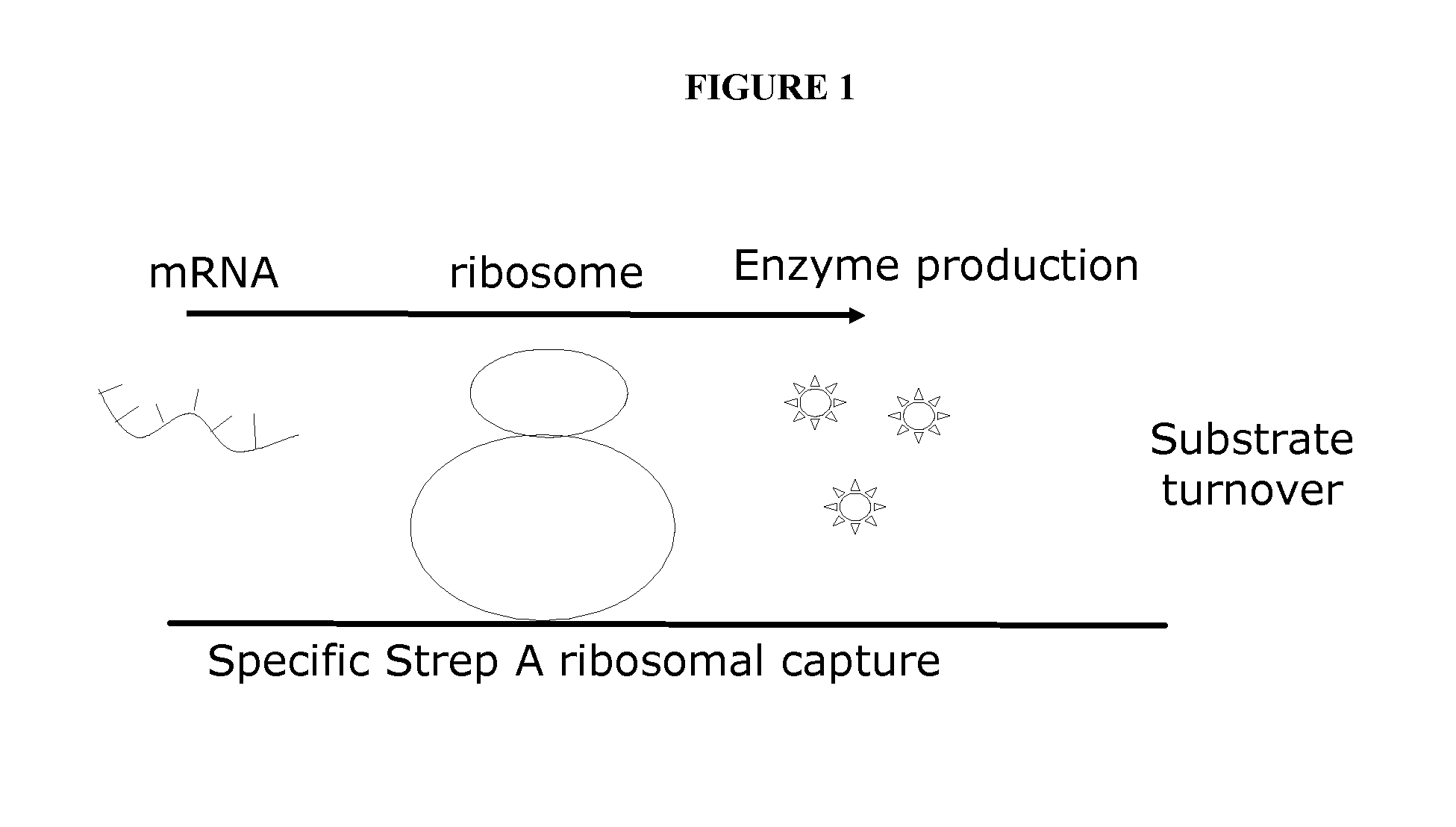Assays and Devices For Identifying Pathogens
a technology for identifying pathogens and assays, applied in the field of assays and devices for identifying pathogens, can solve the problems of affecting the accuracy of the test, and taking hours to complete, so as to avoid complex reaction conditions, and reduce the cost of testing.
- Summary
- Abstract
- Description
- Claims
- Application Information
AI Technical Summary
Benefits of technology
Problems solved by technology
Method used
Image
Examples
example
[0052]The invention, having been generally described, may be more readily understood by reference to the following examples, which are included merely for purposes of illustration of certain aspects and embodiments of the present invention, and are not intended to limit the invention in any way. All headings are for the convenience of the reader and should not be used to limit the meaning of the text that follows the heading, unless so specified.
[0053]FIG. 1 depicts the use of ribosomal amplification to detect Streptococcus A bacteria. Briefly, antibody to a specific ribosomal protein of Streptococcus A is bound on a support. The sample to be tested is extracted and the bacteria contained within the sample lysed to allow ribosomes to be released (approximately 20,000 ribosomes per bacterial cell). The sample is then flowed over the support to allow the released ribosomes to bind the antibody. The sample is washed to remove unbound ribosomes and other materials from the support, and ...
PUM
| Property | Measurement | Unit |
|---|---|---|
| noise | aaaaa | aaaaa |
| temperature | aaaaa | aaaaa |
| stereoisomers | aaaaa | aaaaa |
Abstract
Description
Claims
Application Information
 Login to View More
Login to View More - R&D
- Intellectual Property
- Life Sciences
- Materials
- Tech Scout
- Unparalleled Data Quality
- Higher Quality Content
- 60% Fewer Hallucinations
Browse by: Latest US Patents, China's latest patents, Technical Efficacy Thesaurus, Application Domain, Technology Topic, Popular Technical Reports.
© 2025 PatSnap. All rights reserved.Legal|Privacy policy|Modern Slavery Act Transparency Statement|Sitemap|About US| Contact US: help@patsnap.com

